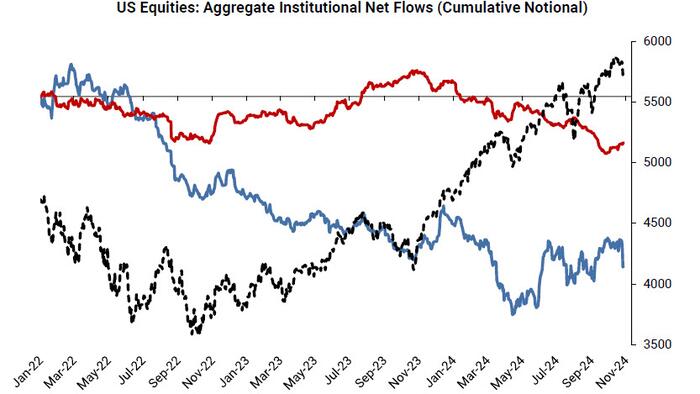As the upcoming presidential election nears, observers are struck by a peculiar sense of calm within the financial markets, particularly given the stark ideological contrasts between the two candidates vying for leadership. This peaceful demeanor is highlighted by the market’s implied move for election day, which stands at a mere 2%—a figure that represents the lowest level of expected volatility since Goldman Sachs began monitoring excess variance. As financial analyst Brian Garrett from Goldman noted, this low level of implied movement could be indicative of an overly tranquil situation that may not fully account for the real potential shifts in the political landscape.
The juxtaposition between the tight race between the two candidates and the subdued market activity raises questions about investors’ perceptions and behaviors as the election approaches. Analysts suggest that the prevailing market sentiment indicates a level of confidence or perhaps complacency that may overlook the potential for significant changes that could arise following the election outcome. With intense ideological divides and varied implications for policy from both candidates, it seems counterintuitive that markets would express such a low level of concern regarding the election’s potential impact.
A potential explanation for this market behavior lies in the reduction in liquidity surrounding the election date, which brings to light the influence that liquidity can have on market volatility. Last week, commentary suggested that diminishing liquidity could be a fundamental driver behind investors’ reduced expectations of volatility leading into the election. This concept was later echoed by Goldman Sachs, reinforcing the idea that as liquidity dwindles, the market’s ability to respond to potential shocks may also decrease, leading to an appearance of calm in times of uncertainty.
It is critical to understand how liquidity interacts with market dynamics to further analyze this current state of acquiescence. Liquidity refers to the ease with which assets can be bought or sold in the market without affecting their price significantly. In the lead-up to crucial events like a presidential election, heightened nervousness can lead to decreased trading volumes, as investors may be inclined to hold onto their positions or stay on the sidelines rather than engage in new trades. This shift in trading behavior can result in decreased market volatility, creating a sense of calm even when underlying tensions remain high.
Moreover, the anticipation of the election results can lead to a state of indecision among investors, further compounding the effects of reduced liquidity. Many may take a wait-and-see approach, which can deter them from taking risks or making substantial market movements. This sentiment can contribute to a stagnant environment where volatility measures drop, even in the face of important political developments that could lead to significant market shifts depending on the election outcome.
In conclusion, while the market’s tranquility might appear at odds with the heated political contest and the implications of differing policies offered by the candidates, it primarily reflects a complex interplay of factors including liquidity concerns and investor sentiment. The 2% implied move indicates a unique moment in market dynamics, where the potential for transformative political change is met with a peculiar sense of complacency. As the election date draws closer, it remains vital for investors to remain vigilant and consider how—despite the current calm—shifts in the political landscape could spark responsive movements in the financial markets once the clarity of election results emerges.

